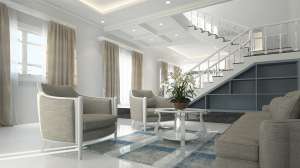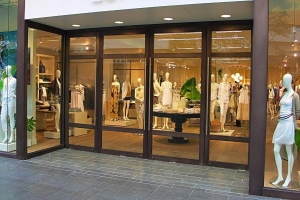Understanding the Influence of Workspace on Productivity
It is widely acknowledged that the design of a workspace can significantly affect the productivity and wellbeing of its users. A well-planned office layout, complemented by the right office furniture, can foster a conducive environment for work, enhancing focus, creativity, and overall job satisfaction. This comprehensive guide will elucidate the critical role that furniture plays in creating an optimal workspace and how to select pieces that align with both functional requirements and aesthetic preferences.
Selecting the Ideal Office Furniture
Choosing office furniture is not merely about aesthetics; functionality and comfort are paramount. The primary aim is to select items that encourage good posture, offer adequate support, and are adaptable to individual needs. Thus, whether you are refurbishing an existing office or setting up a new one, it is vital to invest time in understanding the various options available and how they can be tailored to the specifics of your workspace.
Desks: The Foundation of an Efficient Workspace
Desks are the cornerstone of any office setting, serving as the mainstay for most employees' daily activities. The selection should consider factors such as the size of the workspace, personal working style, and technological requirements. Options range from adjustable standing desks to ergonomic designs that cater to prolonged use.
Chairs: Combining Comfort and Productivity
An essential element in any office, chairs should provide adequate lumbar support and adjustability. It is critical to choose chairs that prevent strain and fatigue, thereby reducing the risk of work-related musculoskeletal disorders. Office chairs come in various models, with ergonomic features being a top priority for many businesses.
Storage Solutions: Keep Clutter at Bay
A cluttered workspace is an anathema to productivity. Hence, implementing a robust storage system is essential. Filing cabinets, shelves, and drawers should be considered to streamline organisation and prevent the accumulation of clutter.
Meeting and Collaborative Spaces: Furniture for Thoughtful Interaction
Modern work environments often emphasise collaboration. Hence, furniture for meeting rooms and common areas should be conducive to interaction without sacrificing comfort or privacy. Modular furniture systems offer good flexibility for such spaces.
Design Aesthetics and Branding Through Furniture
Office furniture also plays a pivotal role in the expression of a company's brand and culture. Colours, materials, and designs should echo the brand's identity and ethos, creating a workspace that not only looks good but also resonates with the company's values.
Reception Area: The First Impression
The reception area provides the first introduction to a company. As such, the furniture here should be welcoming and reflective of the corporate image, while also being comfortable for guests and functional for reception staff.
Personalising Spaces: A Touch of Individuality
While uniformity has its place in office design, allowing a degree of personalisation can make employees feel valued and invested in their workspace. Selecting office furniture that can be customised or adapted helps support this individuality.
Material Considerations for Longevity and Sustainability
Material choice is crucial in terms of durability, maintenance, and sustainability. Furniture made from quality, sustainable materials can withstand the daily rigours of office life while also reducing the environmental impact. It is worth spending extra on timeless and sustainable pieces that will last and contribute positively to the company's green credentials.
Ergonomics: The Heart of Office Furniture Design
The importance of ergonomics cannot be overstated when it comes to office furniture. Furniture that is ergonomically designed can significantly reduce the physical stress on the body, contributing to healthier, more productive employees. It is recommended to seek expert advice or to lever the knowledge of experienced retailers to ensure that the selected office furnishings meet ergonomic standards.
Cost Versus Quality: Striking the Right Balance
While cost is often a determining factor in furniture selection, it should not be at the expense of quality. High-quality furniture may come at a higher initial cost but can be more cost-effective in the long run due to its durability and positive impact on employee welfare.
Embracing Technological Advances in Office Furniture
The modern office is a technological hub, and furniture should support this digital landscape. Desks with integrated cable management systems and smart, connectivity-friendly designs are just some examples of how office furniture can accommodate technological demands.
Implementing a Progressive Office Redesign
Revitalising a workspace with new office furniture is not a task to be taken lightly. It demands careful planning, a clear understanding of staff needs, and an appreciation of the long-term benefits that the right furnishings can provide. Considering the insights this guide offers, businesses can forge spaces that not only elevate productivity but also reflect their commitment to employee contentment and wellbeing.
Conclusion
As businesses strive to optimise their workspaces, the selection of office furniture becomes an integral part of the equation. From ergonomic chairs to desks that reflect the latest technological integrations, choosing the right furnishings is vital. Ultimately, it is an investment in the health and productivity of a workforce and the embodiment of a company's culture and ethos. By using this guide as a resource, organisations can embark on a journey to revitalise their workspaces in a manner that is both functional and aesthetically pleasing.
Further Reading and Resources
For those looking to delve deeper into the subject of office furniture and workspace design, there are a wealth of resources available. Whether you are seeking to remake a small home office or re-envision a large corporate space, exploring a variety of perspectives and engaging with experts can ensure that your furniture choices are insightful and impactful. Remember, the ultimate goal is to create a space that not only looks great but also promotes health, productivity, and positive corporate culture.






